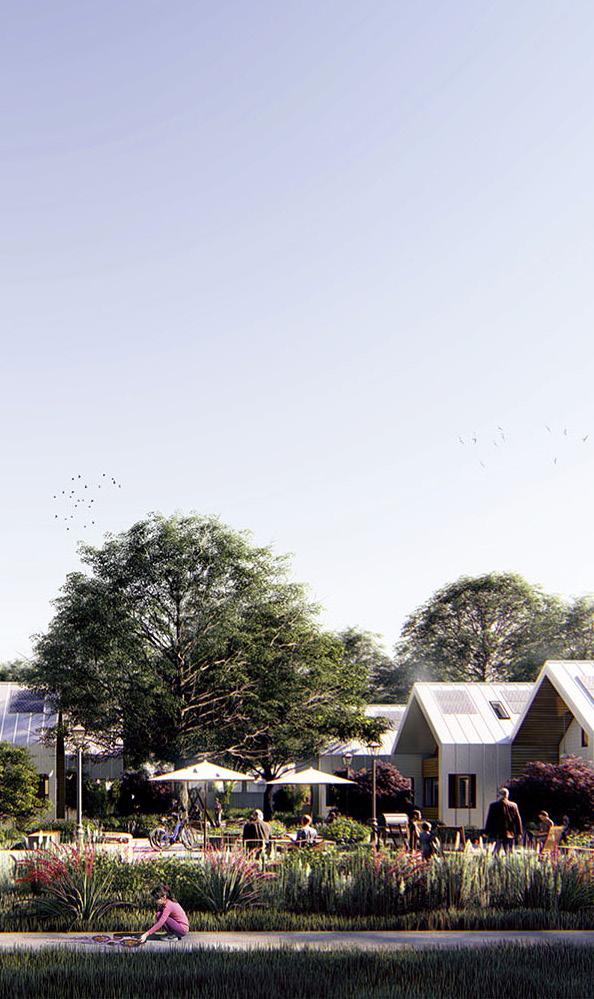
2 minute read
JASON F. MCLENNAN
The building of Jason McLennan’s dreams is like a flower: it would fit seamlessly as an organic growth out of its habitat, rooted in place and self-sufficient in its environment.
He speaks of it with a concise eloquence: “It can’t pollute the soil or the earth around it, or it dies. In fact, when it dies, it becomes nutrients for the next cycle. When it’s alive, it reacts actively to temperature and humidity and becomes a habitat for critters, some that we see and some that we don’t. And the kicker for me is that it is just so beautiful.”
“Why,” McLennan asks, “can’t we do these things that nature does?”
The US-based architect sought to answer this question in his approach to design. Make the building completely sustainable; design it so it collects rain water and sun rays; fit it out with a plumbing system that processes its refuse in-house; make it an integral part of its surroundings rather than a burden on them.
This approach has made him a lodestar in the green building movement. In 2006, he himself established the Living Building Challenge, a globally-regarded sustainable building certification that both promotes and delineates the extent to which a construction – whether a building, landscape, neighbourhood or piece of infrastructure, whether in the city or the country, new or retrofitted – can be regarded as a genuinely sustainable outgrowth of its setting.
As CEO of McLennan Design, he came to manifest this vision in projects around the world.

But it wasn’t always like this. Born in 1973, the era during which McLennan came of age as an architect did not view sustainability as a priority. That changed as the 20th century gave way to the 21st, and the full scale of the climate catastrophe came into focus.
To him, it had always been obvious, though, and he had played the role of proverbial soothsayer: a powerful message but no audience
Why
to pay him any mind. That didn’t stop him from quitting a lucrative job at a leading firm and, with a wife and a young child to look after, moving to the West Coast to start his own thing. McLennon began designing buildings that, rather than be carcinogenic, did nothing adverse to us at all; that, rather than emitting carbon into the atmosphere, would help offset it. Who wouldn’t want to have their life tied to a building with no energy bills, no water bills and no toxic chemicals?
A case in point is his Bullitt Center, opened in 2013 in Seattle, Washington. The six-story office building is completely powered by solar energy (no easy feat in the contiguous United States’ dampest city). On an annual basis, the building produces more energy than it consumes. Every one of the building’s bathrooms – from the sixth floor down to the bottom –has composting toilets that produce nutrients, with the structure not even connected to the municipal sewer system.

Instead, he says it “operates like a brain,” with sensors all over the building that open and close windows, raise and lower shades, and turn up or dim the lights as needed. It’s naturally ventilated, and the heating only comes on if needed. Again evoking a flower, the building “is trying to find the best conditions to be in.”
McLennan’s vision is catching on. In 2016, he won ENR’s Award of Excellence for turning the Living Building Challenge into a global standard for sustainability in architecture. And the firm itself is no longer in any financially precarious state: McLennan Design with its 10 employees recently merged with Perkins&Will, which, with 2,400 employees, is the second largest architecture firm in the world. McLennan’s ultra-green ethos will be heard far and wide as he offers his consulting services to this juggernaut.










